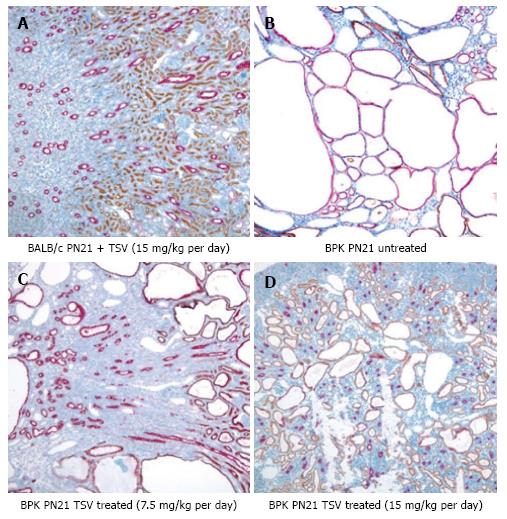Copyright
©The Author(s) 2017.
World J Nephrol. Jul 6, 2017; 6(4): 188-200
Published online Jul 6, 2017. doi: 10.5527/wjn.v6.i4.188
Published online Jul 6, 2017. doi: 10.5527/wjn.v6.i4.188
Figure 2 Renal morphology of tesevatinib-treated BPK kidneys.
Immuno-histological analysis of BPK kidneys reveals a marked decrease in the size and number of collecting tubule cysts (stained red) following treatment with TSV at 7.5 mg/kg per day (C) and 15 mg/kg per day (D) when compared to the untreated cystic kidneys (B). Treatment of control BALB/c kidneys with TSV at 15 mg/kg per day (A) demonstrated no obvious histological abnormalities (Nephron segment-specific lectin binding of lotus tetragonolabus agglutin shows proximal tubules in brown, and binding of dolichus biflorus agglutin shows collecting tubules in red). TSV: Tesevatinib.
- Citation: Sweeney WE, Frost P, Avner ED. Tesevatinib ameliorates progression of polycystic kidney disease in rodent models of autosomal recessive polycystic kidney disease. World J Nephrol 2017; 6(4): 188-200
- URL: https://www.wjgnet.com/2220-6124/full/v6/i4/188.htm
- DOI: https://dx.doi.org/10.5527/wjn.v6.i4.188









